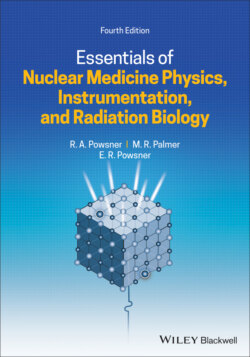Читать книгу Essentials of Nuclear Medicine Physics, Instrumentation, and Radiation Biology - Rachel A. Powsner - Страница 29
Unstable Neutron–Proton Ratio Too many neutrons—beta decay:
ОглавлениеNuclei with excess neutrons can achieve stability by a process that amounts to the conversion of a neutron into a proton and an electron. The proton remains in the nucleus, but the electron is emitted. This is called beta radiation, and the electron itself a beta particle (Figure 1.15). The process and the emitted electron were given these names to contrast with the alpha particle before the physical nature of either was discovered. The beta particle generated in this decay will become a free electron until it finds a vacancy in an electron shell either in the atom of its origin or in another atom.
Figure 1.13 Alpha decay.
Figure 1.14 Fission of a 235U nucleus.
Figure 1.15 β – (negatron) decay.
Careful study of beta decay suggested to physicists that the conversion of neutron to proton involved more than the emission of a beta particle (electron). Beta emission satisfied the rule for conservation of charge in that the neutral neutron yielded one positive proton and one negative electron; however, it did not appear to satisfy the equally important rule for conservation of energy. Measurements showed that most of the emitted electrons simply did not have all the energy expected. To explain this apparent discrepancy, the emission of a second particle was postulated and that particle was later identified experimentally. Called an antineutrino (neutrino for small and neutral), it carries the “missing” energy of the reaction.
